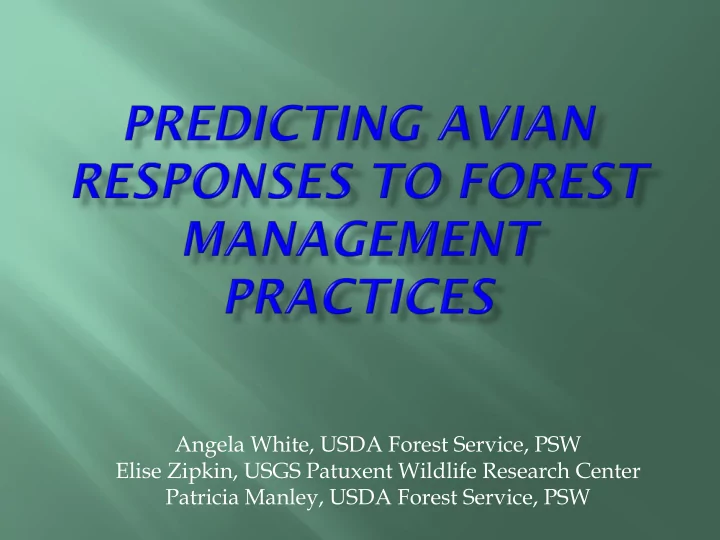

Angela White, USDA Forest Service, PSW Elise Zipkin, USGS Patuxent Wildlife Research Center Patricia Manley, USDA Forest Service, PSW
Do nothing Traditional fuel reduction prescription Reducing ladder fuels and canopy cover Spatial heterogeneity prescription (GTR-220) Emphasis on maintaining/creating structural variability
Experimental studies are often ambiguous Treatments and starting conditions vary Measuring short-term responses Why use occupancy modeling? Responses not limited to abundant species Accounts for imperfect detection Models habitat covariates directly
Probability of occupancy Requirements Detection/non- detection data Spatially and temporally replicated data Point count data collected from 742 locations from 2002- 2005
Air Bark Ground Seed Bark Foliage forager forager invertivore eater invertivore gleaner
How does treatment impact species, communities and ecosystem services Does incorporating spatial heterogeneity in treatments benefit biodiversity? How does urbanization mediate wildlife response?
Assess “biodiversity” needs Embrace heterogeneity Further need to understand management impacts on rarer species Link between species composition and ecosystem services
Collaborative project between USDA Forest Service PSW & Spatial Informatics Group (SIG)
Recommend
More recommend